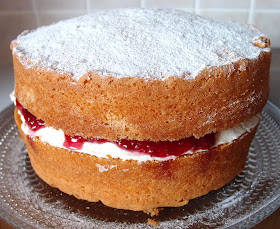
You may have seen adverts or mentions for the “World’s Biggest Coffee Morning” on Friday 30th September; now in its 21st year this event encourages people to take some time out with their nearest and dearest, enjoy a cup of coffee (or tea!) and perhaps a slice of lovely cake whilst raising money for Macmillan Cancer Support.

This year, even if you can’t hold or attend an event you can do your bit by buying Macmillan’s Little Book of Treats from any M&S Cafe – the book is amazing; it’s only £3 and has 31 recipes in it...and I honestly want to make ALL of them! And if that isn’t for you, you can simply buy any from a range of nine products in an M&S Cafe and they will donate 10p to Macmillan for each purchase.

So, faced with a book where I wanted to make all 31 recipes what did I pick? I followed my heart and went with one of my true loves – coconut! The moist coconut cake recipe is lovely and I made minimal tweaks to it.

The cake has an interesting method in that you soak the desiccated coconut in the milk for a few hours to plump it up before adding to the cake batter. Not only does this soften the coconut, but it also infuses the milk a bit too. I will definitely be using that tip again.

Textures are important in this cake; the soft, moist sponge is one of the lightest I’ve ever made – you’d almost swear it was made with only the white from the egg (it isn’t). The white icing was thinner than I’m used to and set with an almost crisp, shell-like quality. I loved it – cake perfection!

I really rate this tip I picked up from watching Ina Garten – stand the cake on 4 squares of paper or foil before pouring on runny icing. These protect the plate from having a puddle of icing – simply remove i.e. pull out when the icing is set! Here are the three stages:



If you’re hosting a coffee morning on 30th September you won’t go far wrong with this cake. I could eat it forever if there was a continual supply of cups of tea!

Ingredients
For the cake:
100g desiccated coconut
150ml milk
110g unsalted butter, at room temperature
250g caster sugar
2 eggs
250g self raising flour
For the icing:
25g desiccated coconut – or you can use sweet tobacco (it’s just a name – it isn’t tobacco), available from sweet shops – it’s toasted shredded coconut tossed in cocoa powder
200g icing sugar
75ml water or lemon juice – I used water
Method
2-4 hours before you wish to start baking, soak the coconut in milk.
Preheat the oven to 170°C/fan oven 150°C/340°F/gas mark 3.
Line a 20cm round springform tin with baking paper.
Beat together the butter and sugar until light and fluffy. It won’t go creamy as it normally would because the amount of butter has been reduced to accommodate the milk.
Beat in the eggs one at a time.
Gently stir in the flour, coconut and milk.
Spoon into the prepared tin and level the surface.
Bake for approximately 1 - 1 hour 15 mins or until a skewer inserted into the cake comes out cleanly. Check it after an hour and cover the top with foil if it’s browning too much.
Leave to cool, in the tin, on a wire rack. When the cake is cool enough to handle de-tin it and leave to cool completely on the wire rack.
Now make the icing: sprinkle the desiccated coconut into a dry frying pan and toast gently. It will burn quickly so don’t leave it unattended. I used sweet tobacco from a sweet shop (it doesn’t contain tobacco)
Tip onto a plate and leave to cool.
Place the icing sugar in a bowl and gradually beat in the water/lemon juice – you may not need it all. Beat until you have a glossy, thick, lump free icing. You want a consistency that will ooze but not run...if that makes sense!
Stand the cake on 4 squares of paper or foil – this will collect any icing and stop it pooling on the plate. Simply remove when the icing is set.
Drizzle the icing over the cake and allow it to ooze down the sides a little.
Sprinkle the toasted coconut on top.
Bask in the glory of the wonderful thing you have created.
Eat.






































